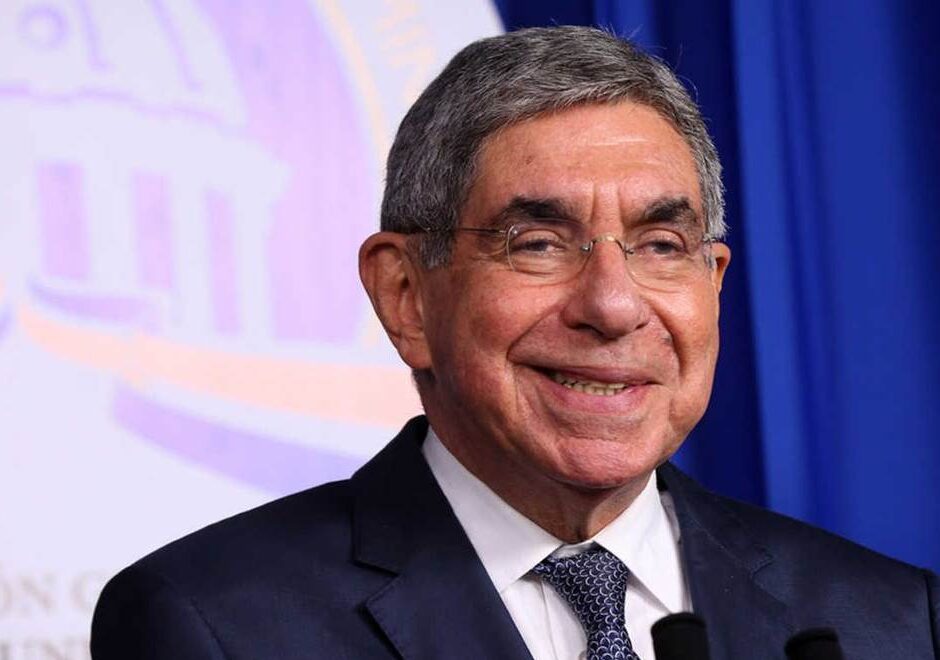Trump's Bold Conspiracy Against Harris's Rally Crowds
Former President Donald Trump's claims about Kamala Harris faking her rally crowds using AI spark widespread controversy and debate.
Published August 13, 2024 - 00:08am

Image recovered from mediaite.com
Former U.S. President Donald Trump has once again found himself at the center of a media frenzy, this time by turning to social media to propagate a conspiracy theory accusing Vice President Kamala Harris of using artificial intelligence (AI) to inflate the size of her rally crowds. This allegation, made through a post on Trump's platform Truth Social, has ignited a storm of responses, debunking efforts, and political commentary, painting a complex picture of the current political landscape.
P.T. Barnum's famous line, There's a sucker born every minute, seems quite pertinent in understanding how easily conspiracy theories can take hold, even among high-profile political figures. Trump's post on Truth Social, which claimed that Harris cheated at the airport by using AI to fabricate images of a large crowd welcoming her to Detroit Metro Airport, was a clear example of misinformation gaining traction rapidly.
This isn't the first time Trump has focused on attendance numbers. He has long been obsessed with the size of his own crowds, often comparing them to historic events. In a recent press conference at Mar-a-Lago, he compared his crowd for the January 6 rally to that of Martin Luther King Jr.'s I Have a Dream speech, falsely claiming his crowd was larger.
Trump's accusations against Harris were quickly disseminated across multiple far-right social media platforms and picked up by figures known for pushing conspiracies, such as disgraced filmmaker Dinesh D'Souza. They shared an image purportedly showing the reflection on the plane to support the claim that the crowd was digitally altered. However, this claim was swiftly debunked by numerous analysts and independent fact-checkers, who pointed out that the reflection on the curved surface of the plane was not a reliable indicator of the presence or absence of people.
One of the most vocal critics of Trump's claims was Hany Farid, a professor at the University of California, Berkeley, and a digital forensics expert. Farid used his LinkedIn platform to debunk the false claims, stating that his analysis showed no evidence of AI-generated modifications in the images of Harris' crowd.
Furthermore, photos and videos from the event at Detroit Metro airport, as reported by CNBC and local reporters, showed a sizable crowd in attendance, estimated at around 15,000 people. These firsthand accounts and visual evidence starkly countered Trump's claims, revealing his allegations as baseless.
David Plouffe, a senior advisor to the Harris campaign, warned of the broader implications of such conspiratorial thinking, especially from someone who has held significant power and could potentially hold it again. He pointed out the serious concerns about the mental state and reliability of a candidate who engages in such conspiratorial rhetoric.
The reaction from the general public and other political figures has been largely dismissive of Trump's claims. For instance, Lavora Barnes, chairwoman of the Michigan Democratic Party, responded mockingly to Trump's assertions, emphasizing the absurdity and illegitimacy of the allegations. Similarly, other notable figures and media outlets reiterated the importance of relying on verified information and actual evidence rather than baseless claims.
The debate over AI's potential to create realistic yet fake images and videos adds another layer of complexity to this issue. While Trump's claim was unfounded, the fear of AI-generated media used nefariously resonates with genuine concerns about the future abuse of such technology. The problem here lies in the distinction between genuine AI-generated threats and politically motivated falsehoods intended to smear opponents with no basis in reality.
This incident also highlights the polarization in current U.S. politics, where misinformation spreads rampantly, and political figures often exploit conspiracy theories to feed into their narratives. It manifests a pattern where unfounded allegations are used to undermine political opponents and sway public opinion, contributing to a deeply divided political environment.
As we look ahead to the upcoming elections, Trump's rhetoric suggests that the use of fabrication accusations might play a significant role in the political strategies employed by some candidates. The focus on social media and its potential to manipulate public perception remains a critical issue that needs addressing to ensure fair and transparent elections.
Trump's allegations against Harris and the ensuing controversy underscore a critical warning: The potential of digital tools and platforms to spread misinformation is vast. Efforts to counteract these through thorough fact-checking and critical examination are essential to maintaining a consensus reality based on truth and verified information, particularly in politically charged contexts.







